Setting a temperature dead band in OpenStudio
Is there a way to set a temperature dead band in OpenStudio?
I am trying to set up my heating and cooling setpoints to have a dead band range so that the HVAC system can potentially be turned on and off as needed, instead of being constantly on. However, when setting up a heating or cooling schedule, it appears that I can only set one static value.
For example, in the screenshot below, I set a cooling setpoint of 23.9C. I want a dead band of 1.1C, so I set the upper and lower limits as 22.8C and 25C. However, those limit settings seem to be only for display purposes. When I run the simulation, the zone temperature is still constant. Is there a way around this?
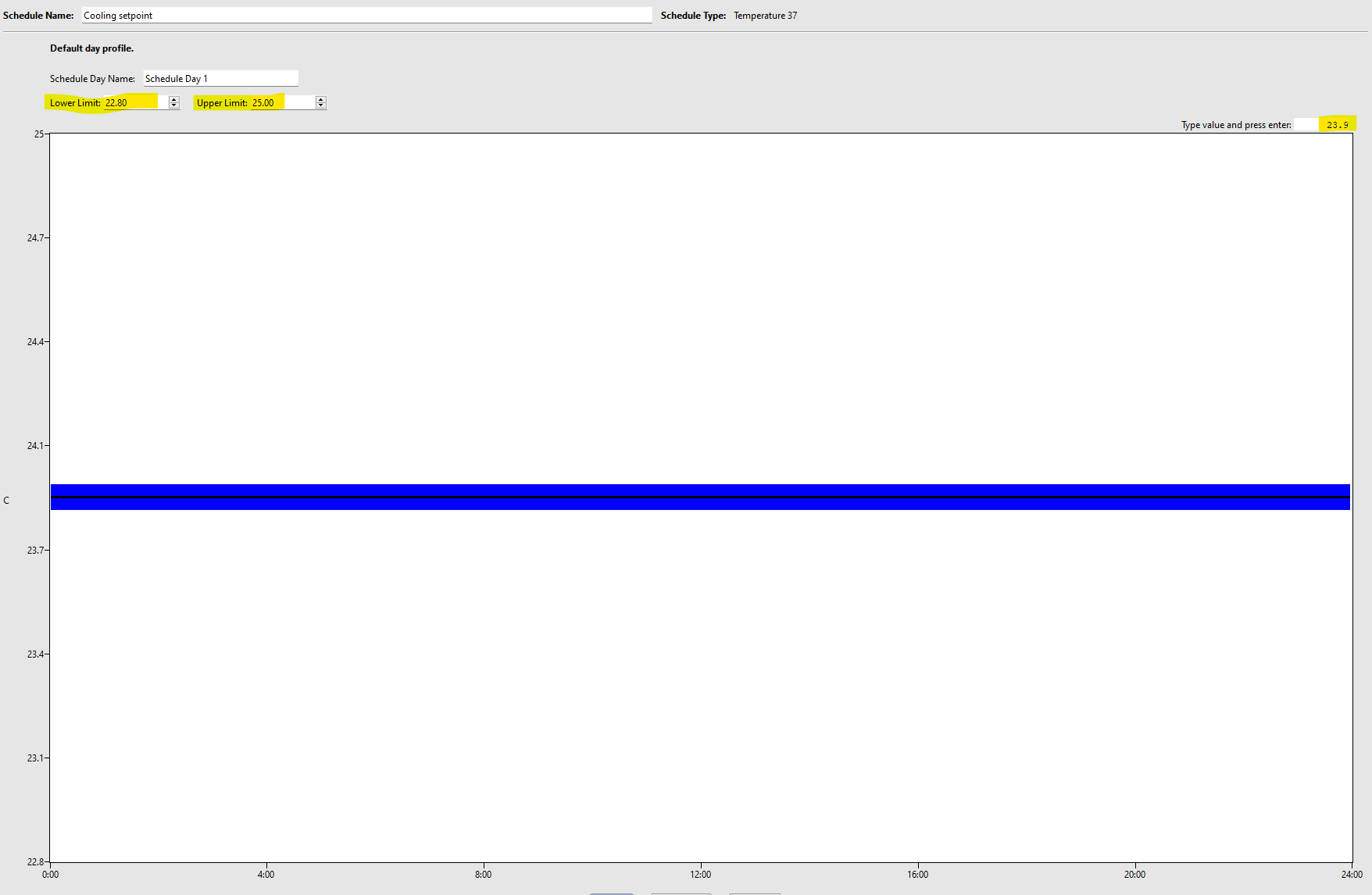
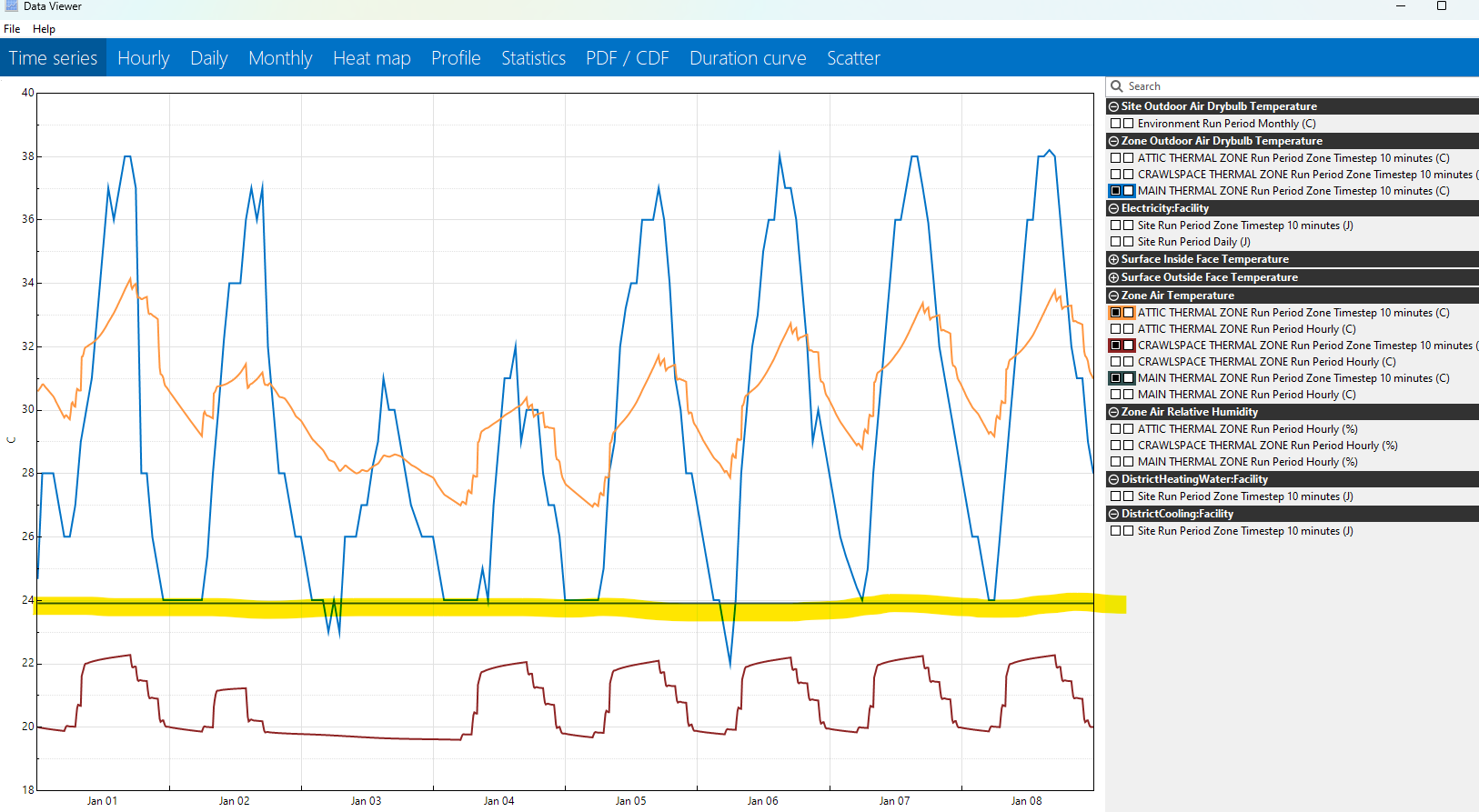
UPDATE: Temperature fluctuation is noticed when the building model is changed from three thermal zones to one. My original building model is made up of an unconditioned crawlspace, a conditioned main floor, and an unconditioned attic. The secondary model is made up of just the conditioned main floor. Both have exactly the same construction materials, but the indoor temperature (in blue) is almost steady in one but fluctuates between the setpoints in another.
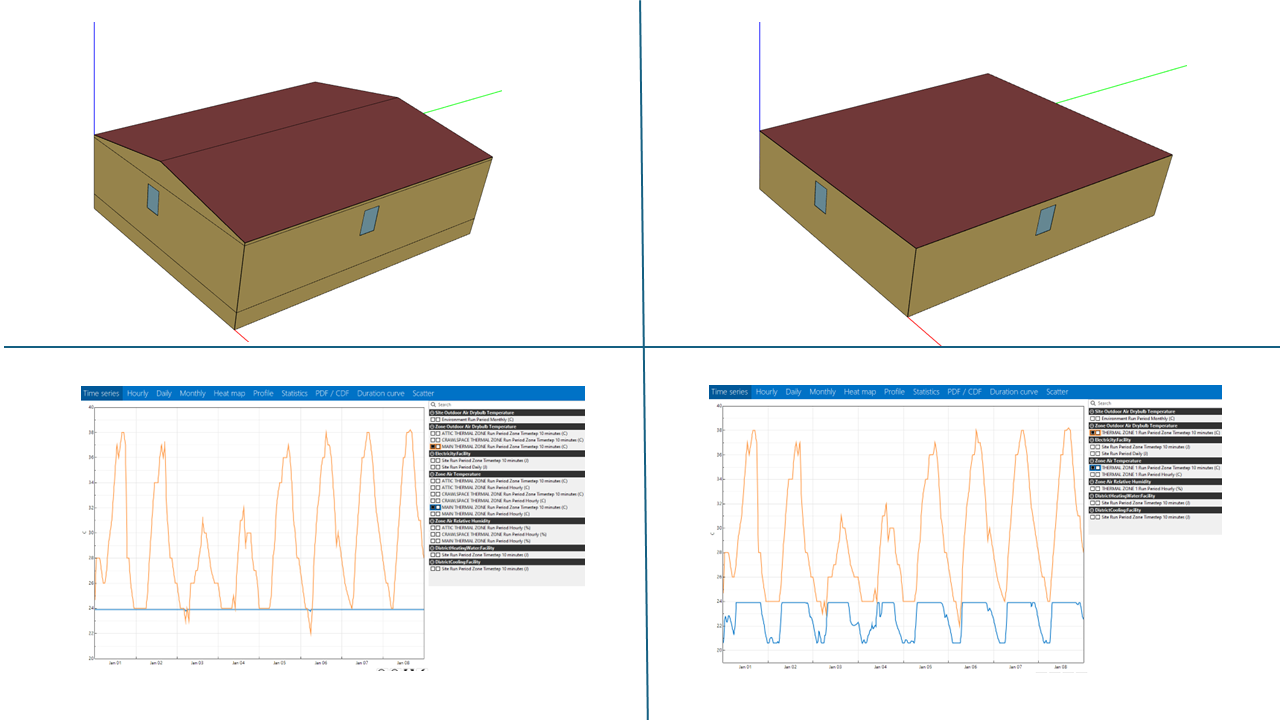
UPDATE 2: The cooling coil (red) responds to outdoor temperature in both cases. In the RHS case, it goes off completely at night and the heating coil (dark green) comes on to raise the temperature back up to the set point. Both models use the "PTAC DX Clg Elec Htg" HVAC system.
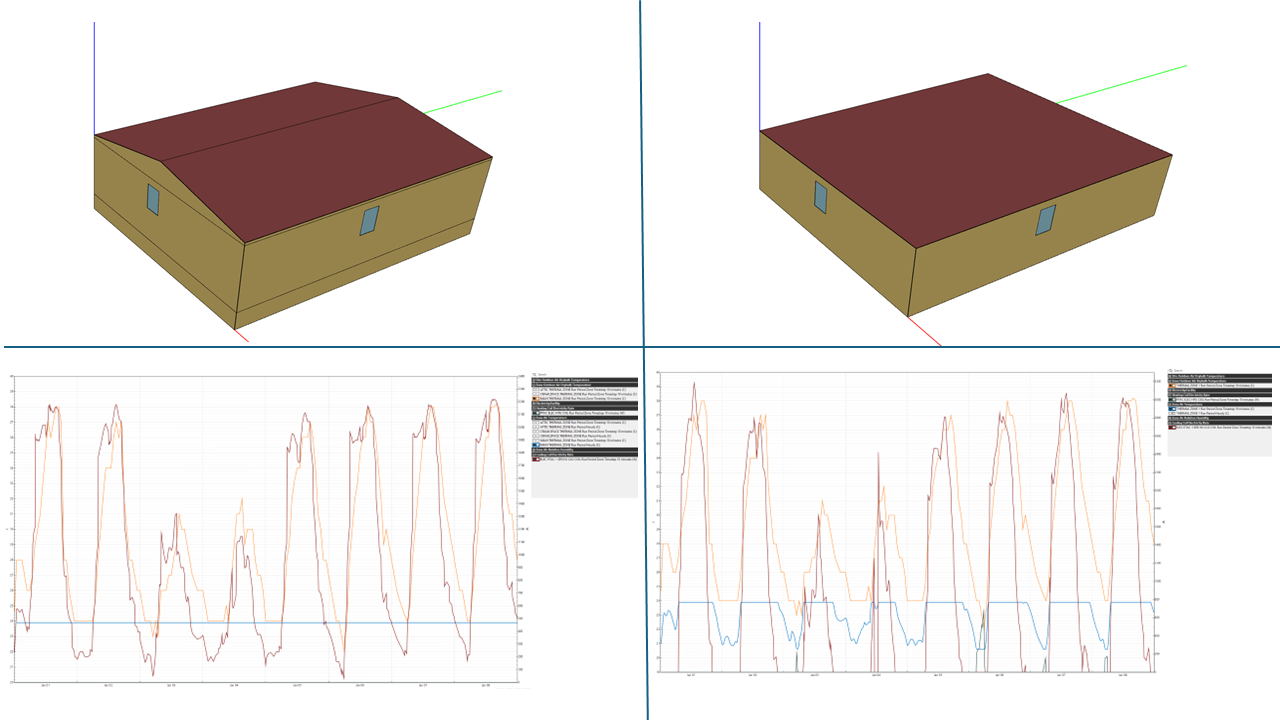


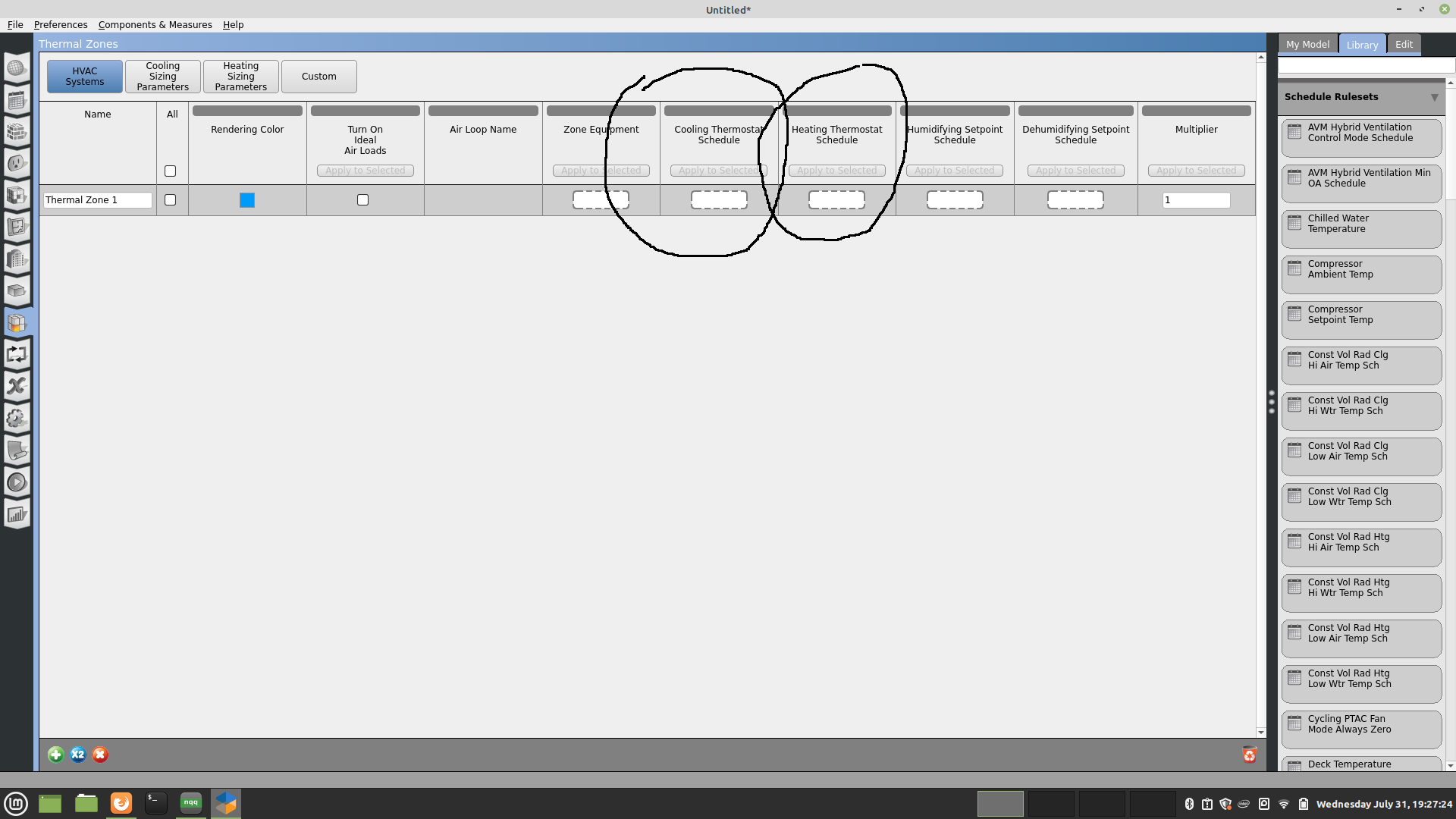



There is an advanced feature in EnergyPlus that allows it, but I doubt it's available in the OpenStudio application. See here.
Thank you @shorowit. All answers I found are only applicable to EnergyPlus, so I fear you might be right.
Does this mean that an OpenStudio simulation with a static setpoint would result in much higher energy consumption since the HVAC system would always be on? Or can I assume that it would be roughly the same as if my deadband was 2F (1.1C)?
The EnergyPlus feature is more about capturing short-term transient effects of cycling. Energy use during the timestep shouldn't be much different between the two (as the impacts of cycling are addressed through the PLR curves), which is why it's not a commonly used feature.
Thanks a lot for the explanation @shorowit.
@Olamide are you trying to define a deadband difference between heating & cooling thermostat setpoints, or are you trying to define a cutout temperature difference from the thermostat setpoint?